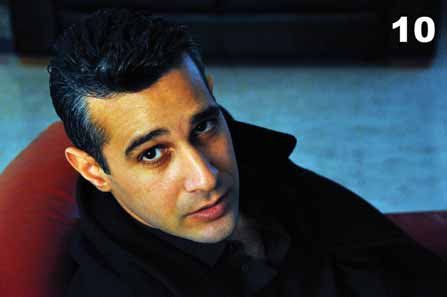
Everybody knows how to take a good snap – you simply point and shoot, and the camera does it all for you. But how do you take a good picture that really captures the moment and is interesting to more than just family and friends?
In my short beginners' photography courses, "Having more fun with your digital camera”, I teach the few simple steps of how to take impressive photos whenever you want to. It’s not rocket science and being able to take good shots is really enjoyable too.
"Don't you need a good camera to take good pictures?" is a question that I'm often asked. My answer is to show lots of impressive pictures I've taken with my mobile phone's camera. I always impress on my students that you take good pictures with your head, not with your camera. Developing your visual sense is far more important than the equipment you use. There are four simple steps to taking good pictures.
Step One
Don't take bad picture!
Snappers often make the same mistakes again and again, but once they're pointed out they're easy to avoid. Take a look at Snap 1 that contains ten common errors. If you can spot all of them you are already starting to take pictures with your head, and not with your camera. One small step for Man; one giant leap for Photography.
Step Two
Becoming visually aware
Here is an exercise that is fun to do, costs nothing, and will dramatically improve the quality of your photography:
Start by leaving the camera in your bag or pocket. Take a couple of minutes to look around and spot an interesting combination of shapes, textures, patterns, objects. You can do this while you are washing up, in the supermarket, sitting in your car, walking down the street ... anywhere, anytime. Now take out your camera and experiment with composing the shot. You might have to move a little to the right or left, front or back, up or down, even tilt the camera horizontally or vertically. Only when you have got the most interesting composition take a shot.
Pictures 2, 3, 4 and 5 are examples of photos that I took with my mobile phone's camera. Taking an interesting shot of something you would not normally notice is the most important photographic exercise you will ever do. When you can make "nothing" look interesting you will definitely be able to take good pictures of something you do find interesting.
Awakening your visual sense is the key to good photography and is the most important and exciting part of my course. (View more examples and check the ten common mistakes at www.langford.co.il/fun)
Step Three
Telling a story
There is an important extra ingredient that most professional pictures have in common - they tell a story. A good shot is like a still image from a short film, and you can't help imagining what went before it or what came after it. You feel involved, drawn in, and you spend longer looking at it. In simple terms, the picture is more interesting.
The next time you take a picture try choosing the moment carefully. Imagine you are a film director and you are snapping one frame of a storyboard. To see what I mean, have a look at pictures 6, 7, 8, and 9. Two of them tell short stories and two of them don't.
Step Four
Location, location, location
Photographers don't just pick up a camera and take a shot from wherever they happen to be. They scout around and choose their position very carefully. They pay particular attention to two things – the lighting and the distance.
Pictures 10 and 11 show the difference to the background that moving a few feet to the side can make. 12 and 13 show how moving closer or farther away from your subject affects the feel of the picture. The trick is to be aware of how your position will affect the shot before you take out the camera, and to move in closer or further away instead of simply zooming the lens.
I hope these illustrations will prove helpful and give you an insight into how to improve your photography. You will get a lot more enjoyment from taking pictures with your head and thinking like a photographer. Of course there is a lot more to learn, but even taking just one of these steps will make all the difference.
Tom Langford is a professional photographer and digital retoucher. He works in advertising, fashion, and architecture. He recently moved to live in Pardes Hanna after living30 years in London. Tel: 052 801 2817, www.langford.co.il.
 Visit to Michmoret Research Center - Gifted Children's Project
Visit to Michmoret Research Center - Gifted Children's Project Esra Kfar Saba Meets Our New Deputy Mayor
Esra Kfar Saba Meets Our New Deputy Mayor Another glorious evening with pianist Gil Shochat
Another glorious evening with pianist Gil Shochat Art from the Heart
Art from the Heart Jewish Art Returns to Jerusalem
Jewish Art Returns to Jerusalem Musical Treats
Musical Treats